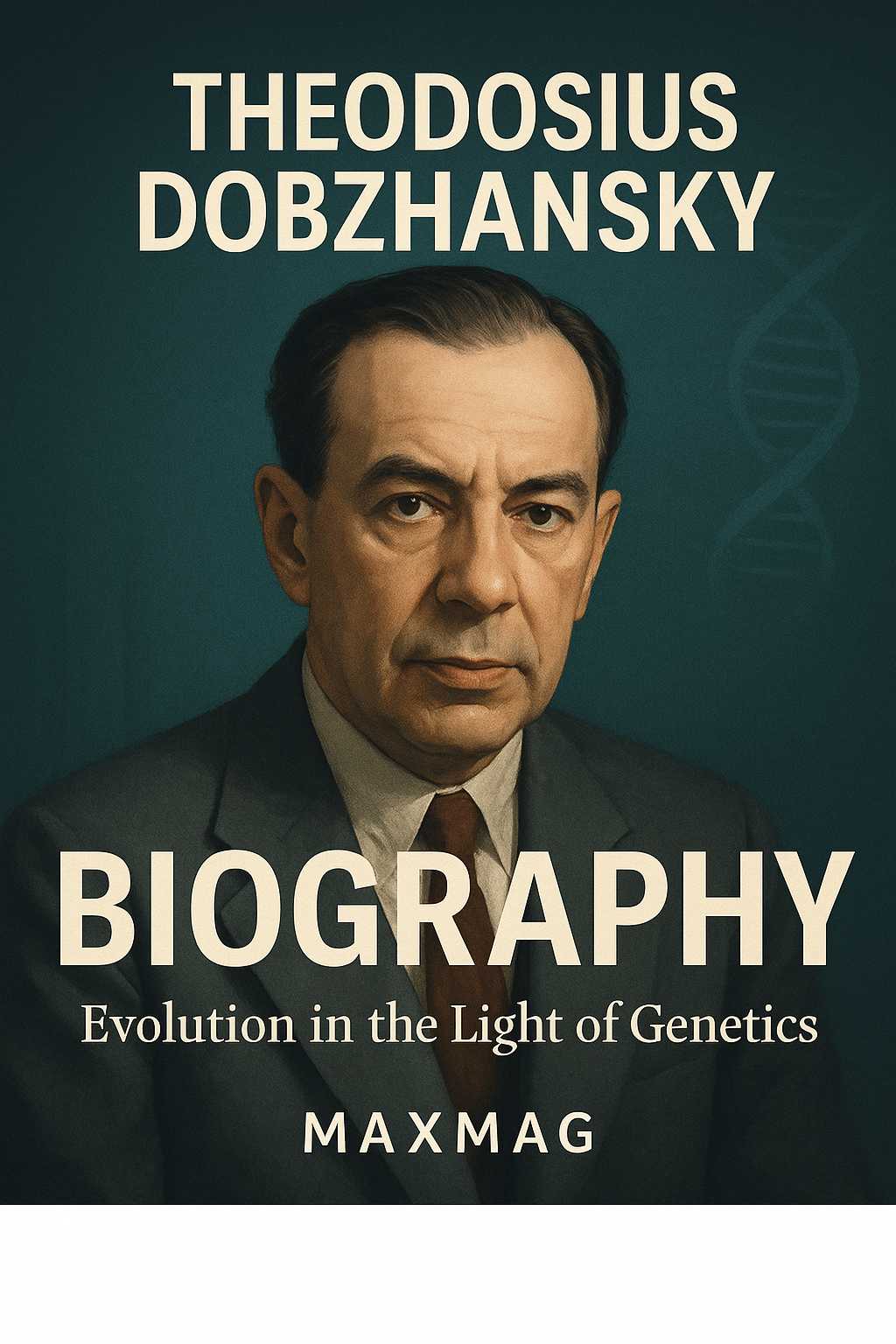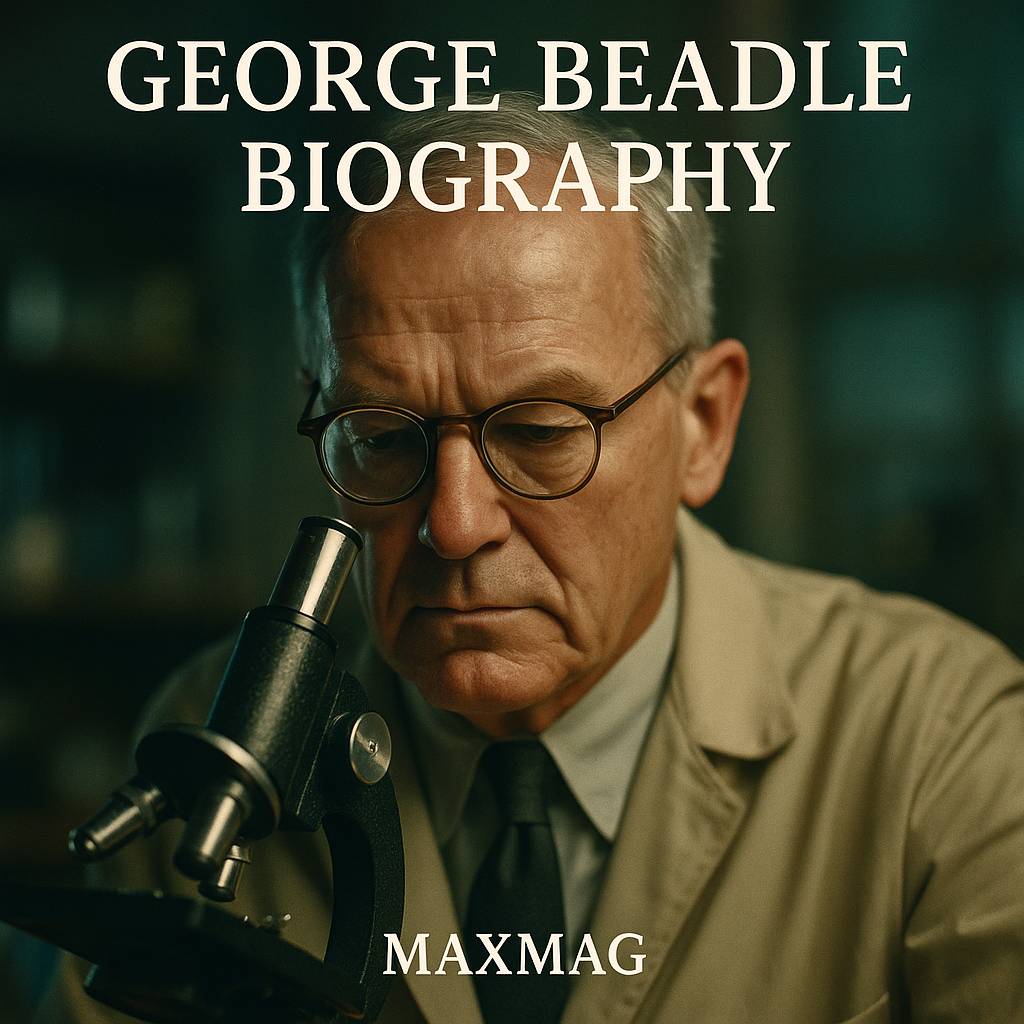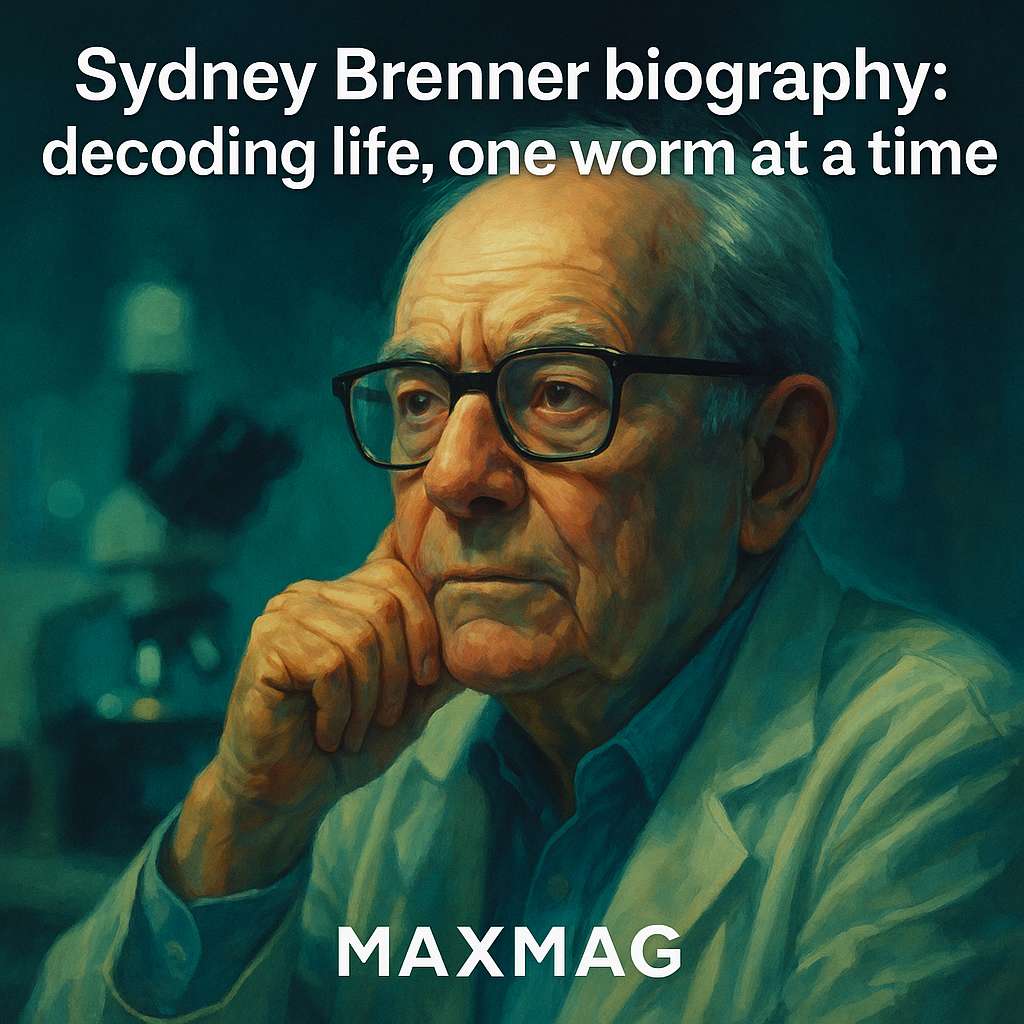
On a dusty high street outside Johannesburg, in a shoe repair shop where his family slept behind the counter, a boy taught himself science from discarded books and old encyclopedias. Decades later, that boy would help crack the genetic code, imagine messenger RNA before anyone had seen it, and turn a transparent worm into one of the most powerful tools in biology. The Sydney Brenner biography is, at heart, a story about how curiosity, stubbornness and a sharp sense of humour reshaped modern genetics.
For readers today, the Sydney Brenner biography offers a way into the golden age of molecular biology: from the first glimpse of the DNA double helix, to the creation of new model organisms, to the rise of genomics and biotech in places as far apart as Cambridge and Singapore. It is also the tale of a South African outsider who never quite stopped seeing science as a human drama filled with arguments, jokes and wrong turns as much as with breakthroughs.
At a glance: who was Sydney Brenner?
- Who: South African-born molecular biologist and Nobel Prize–winning geneticist.
- Field and era: Molecular biology pioneer of the late 20th-century science revolution, active from the 1950s into the 21st century.
- Headline contributions: Helped decipher the genetic code, co-conceived messenger RNA, proved the “triplet” nature of that code, and established the tiny roundworm Caenorhabditis elegans as a model organism for development and neuroscience.
- Why he matters today: Much of what we know about how genes build bodies, wire nervous systems and trigger cell death rests on foundations laid in the Sydney Brenner biography.
Early Life and Education of Sydney Brenner
Childhood roots that shaped the Sydney Brenner biography
Sydney Brenner was born in 1927 in Germiston, a mining town near Johannesburg in South Africa, the son of Jewish immigrants from Eastern Europe. His father, a cobbler from Lithuania, and his mother, who had come from Latvia, ran a small shoe repair shop where the family lived in the back rooms. It was not the sort of place one would expect to produce a Nobel laureate, but it gave Brenner two key ingredients: hardship and hunger for escape. Books became that escape. He devoured everything he could find in the local library, from classic literature to popular science, building the raw intellectual toolkit that would later power the Sydney Brenner biography.
School came easily. By 15, Brenner had entered the University of the Witwatersrand in Johannesburg to study medicine, far younger than most of his classmates. Administrators soon realised he would be too young to qualify as a practising doctor, so they allowed him to take an additional science degree alongside his medical training. It was an administrative workaround, but it quietly nudged him away from the clinic and towards the lab bench, a pivot that would define the rest of the Sydney Brenner biography.
An early appetite for experiment
As an undergraduate, Brenner gravitated towards teachers who treated biology as a quantitative, physical science. Courses in physical chemistry and microscopy opened his eyes to the idea that living cells could be studied with the same rigour as molecules or crystals. He carried out small projects on bacteria and viruses, learning to be suspicious of tidy textbook explanations and to trust what he could see through a lens or on a photographic plate. That instinct—to chase actual data rather than fashionable ideas—would be a defining feature of the Sydney Brenner biography.
After finishing his medical degree, he stayed on for a Master’s and then moved to Oxford for a doctorate in physical chemistry, studying bacteriophage resistance in E. coli. It was not glamorous work, but it taught him how genes could be followed through generations of microbes and how subtle mutations could be teased out from noisy experimental results. In an era when “molecular biology” was not yet a fully formed discipline, Brenner was effectively assembling his own training programme for the role he would soon play as a molecular biology pioneer.
Sydney Brenner biography and the birth of molecular biology’s big ideas
Seeing the DNA double helix up close
One of the most cinematic moments in the Sydney Brenner biography came in April 1953. Hearing that two young scientists in Cambridge had built a physical model of the structure of DNA, Brenner joined a carload of Oxford colleagues making the trip to the Cavendish Laboratory. They arrived to find James Watson and Francis Crick standing next to their now-iconic double helix, within reach on a lab bench rather than tucked away in an equation or a diagram. Brenner later wrote that he knew instantly he was seeing “the beginning of molecular biology.”
That visit was a turning point. Brenner soon arranged to move to Cambridge and join the growing community around Crick. He would spend the next two decades at what became the Medical Research Council Laboratory of Molecular Biology (LMB), sharing an office with Crick and tossing ideas back and forth on everything from protein synthesis to the origin of the genetic code. If the history of the genetic code reads like a detective novel, then this period is where the Sydney Brenner biography becomes one of its central chapters.
How the genetic code entered the Sydney Brenner biography
At the time, biologists knew that DNA carried information in its sequence of bases, but not how that sequence specified particular amino acids in proteins. Was it read three letters at a time, or in overlapping patterns, or something more exotic? Brenner’s genius lay in imagining experiments that could distinguish between competing possibilities. Working with Crick and colleagues, he analysed “frameshift” mutations—insertions or deletions of single bases in viral DNA—that scrambled protein products in predictable ways. From the patterns of disruption, they inferred that the genetic code is read in non-overlapping triplets: three bases for one amino acid, over and over.
This was not just an elegant piece of logic; it was a key step in turning DNA from an abstract symbol into a working language. Around the same period, Brenner was deeply involved in shaping the “central dogma” of molecular biology—the idea that information flows from DNA to RNA to protein, but not in reverse. In conversations and experiments with Crick, François Jacob and Matthew Meselson, he helped conceive and then demonstrate the existence of messenger RNA, the short-lived molecules that carry genetic instructions from the nucleus to the protein-making machinery. In simple terms, if you imagine the cell as a factory, the Sydney Brenner biography is bound up with the discovery of the courier system that moves blueprints from the archives to the shop floor.
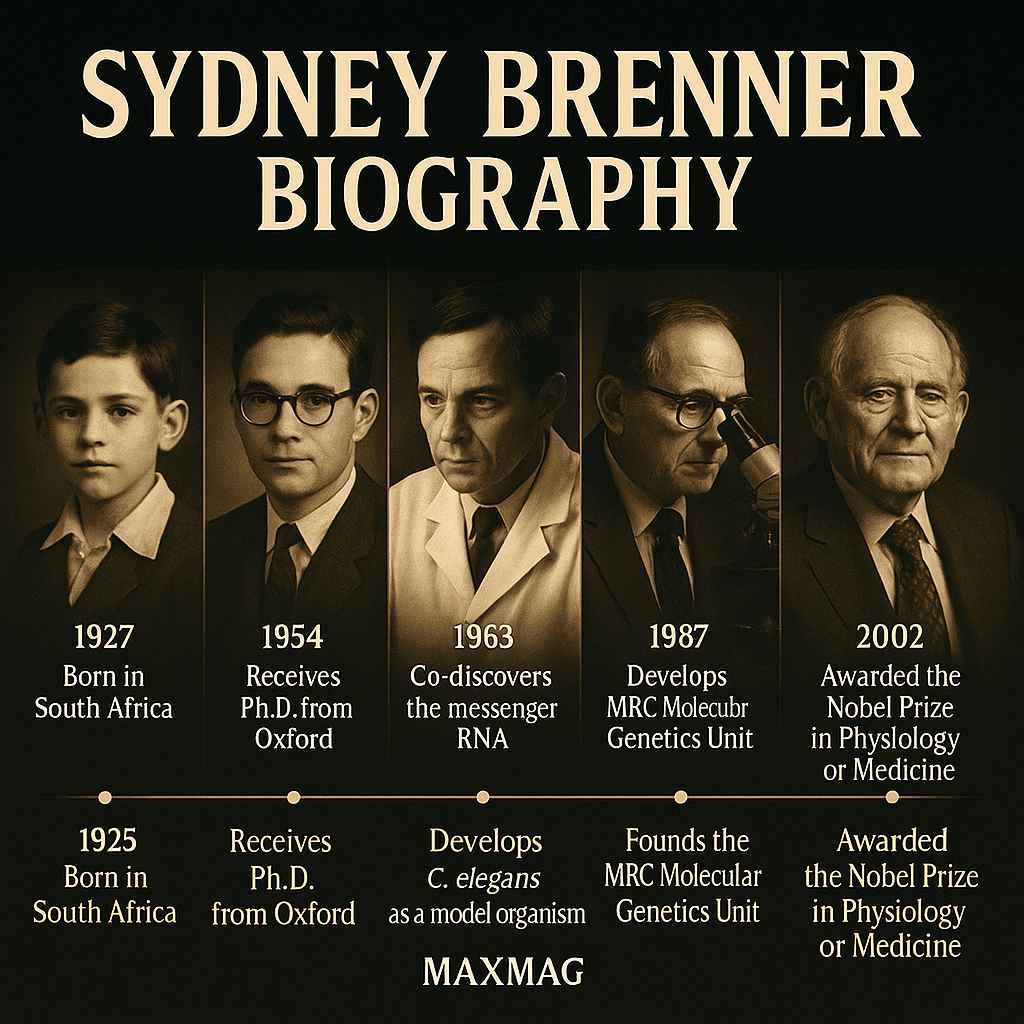
Key Works and Major Contributions of Sydney Brenner
From code-breaker to worm whisperer
Having helped pin down how the genetic code works, Brenner could have spent the rest of his career elaborating its details. Instead, he did something bolder. In the mid-1960s, he set out to answer a different question: how does a fertilised egg turn into a complex animal with muscles, nerves and organs in all the right places? To tackle this, he realised, you needed a creature simple enough to map cell by cell but complex enough to have behaviour and a nervous system. His answer was Caenorhabditis elegans, a one-millimetre soil worm that eats bacteria and lives in compost heaps.
Choosing C. elegans looked eccentric at the time. There was no literature, no community and no guarantee it would reveal anything general about animal development. But Brenner saw possibilities where others saw inconvenience. He established a system in which mutations in the worm’s genes could be linked to visible defects in its movement, development or behaviour. Over years of meticulous work—often described by colleagues as the “worm project”—he and his team mapped the worm’s nervous system, tracked every cell division from egg to adult and identified genes that controlled programmed cell death, or apoptosis. For this, he shared the 2002 Nobel Prize in Physiology or Medicine with John Sulston and H. Robert Horvitz.
C. elegans and the wider Sydney Brenner biography
The worm turned out to be a Rosetta stone for modern biology. Its transparent body allowed researchers to watch cells divide and die under the microscope; its short life cycle and ease of breeding made genetic screens feasible; its simple nervous system gave neuroscientists an entire whole-brain wiring diagram to play with. Today, when scientists talk about “model organisms”—mice, flies, zebrafish, yeast—they are using a concept that Brenner helped solidify through his work on C. elegans. In many ways, the Sydney Brenner biography is the template for how one stubborn scientist can take a neglected creature and turn it into a global research platform.
Later in his career, Brenner extended this logic to other organisms. He advocated for the pufferfish Fugu as a compact vertebrate genome to sequence and pushed for bold comparative genomics at a time when sequencing still seemed expensive and exotic. He also played a role in advancing developmental biology, gene regulation and neuroscience, always with an eye for problems that could be cracked with a mixture of clever genetics and ruthless simplification.
Methods, Collaborations and Working Style in the Sydney Brenner biography
A conversational scientist with a sharp tongue
The legendary image of Brenner is not of a lone genius hunched over a bench, but of a man in a crowded office, chain-smoking, arguing, drawing diagrams on scrap paper. Colleagues remember that the door to his office at the LMB was rarely closed; young researchers wandered in and out, and ideas ping-ponged between Brenner, Crick and a rotating cast of visitors. In later interviews, many would describe these conversations as their real education.
He worked fast and thought even faster, often sketching out experimental ideas in a single conversation. Yet he also valued rigour. The stories told in the Sydney Brenner biography often hinge on his willingness to throw away elegant theories if they didn’t match the data. He liked simple experiments with clear outcomes that could kill bad ideas quickly. The most famous of these—using frameshift mutations to test the triplet nature of the code—is a classic example: brutal in its simplicity, devastatingly persuasive in its logic.
Building institutions as part of the Sydney Brenner biography
Brenner’s working style extended beyond individual labs. He helped shape the culture of the MRC Laboratory of Molecular Biology, with its flat hierarchy, shared coffee room and emphasis on bold, risky projects. Later, he founded the Molecular Sciences Institute in Berkeley and advised institutions from the Salk Institute in California to research centres in Singapore and Japan. For him, building spaces where people could argue freely about science was as important as any single paper.
One of the most valuable glimpses into his thinking comes from archival collections at Cold Spring Harbor Laboratory, where letters, lab notebooks and photographs trace his path from South African student to global molecular biology pioneer. Readers who want a deeper dive than any single Sydney Brenner biography can offer may find that archival biography at Cold Spring Harbor Laboratory particularly revealing.
Controversies, Criticism and Misconceptions
A fearless critic of “big science”
Brenner’s sharp wit sometimes crossed into controversy. In public lectures and in his much-loved “Loose Ends” columns, he mocked bloated projects, jargon-filled grant proposals and what he saw as shallow uses of technology. He once quipped that some large-scale genomics efforts were “low input, high throughput, no output” projects—a line that delighted young sceptics and infuriated those on the receiving end. For anyone reading a candid Sydney Brenner biography, this streak of mischief is impossible to ignore.
Critics argued that he could be unfair, that he underestimated the value of data-intensive research, or that his public barbs discouraged collaboration. Supporters countered that his satire kept the field honest, forcing scientists to ask whether their work truly answered meaningful biological questions. In practice, Brenner did collaborate with many “big science” projects; he simply demanded that they be guided by clear hypotheses rather than by technology for its own sake.
Myths about the solitary genius
Another misconception corrected by a serious Sydney Brenner biography is the idea that he worked alone. The achievements associated with his name—the central dogma, messenger RNA, the triplet code, C. elegans as a model organism—were all profoundly collaborative. He was at his best embedded in a dense network of colleagues, students and rivals. To cast him as an isolated mastermind is to misunderstand both the man and the way modern science operates.
He himself resisted tidy myth-making. In interviews late in life, he preferred to talk about “being in the right place at the right time” and about the joy of arguing, rather than about personal heroics. The humour that runs through the Sydney Brenner biography is partly self-defence: a way of puncturing any narrative that paints him as a saint or a lone warrior.
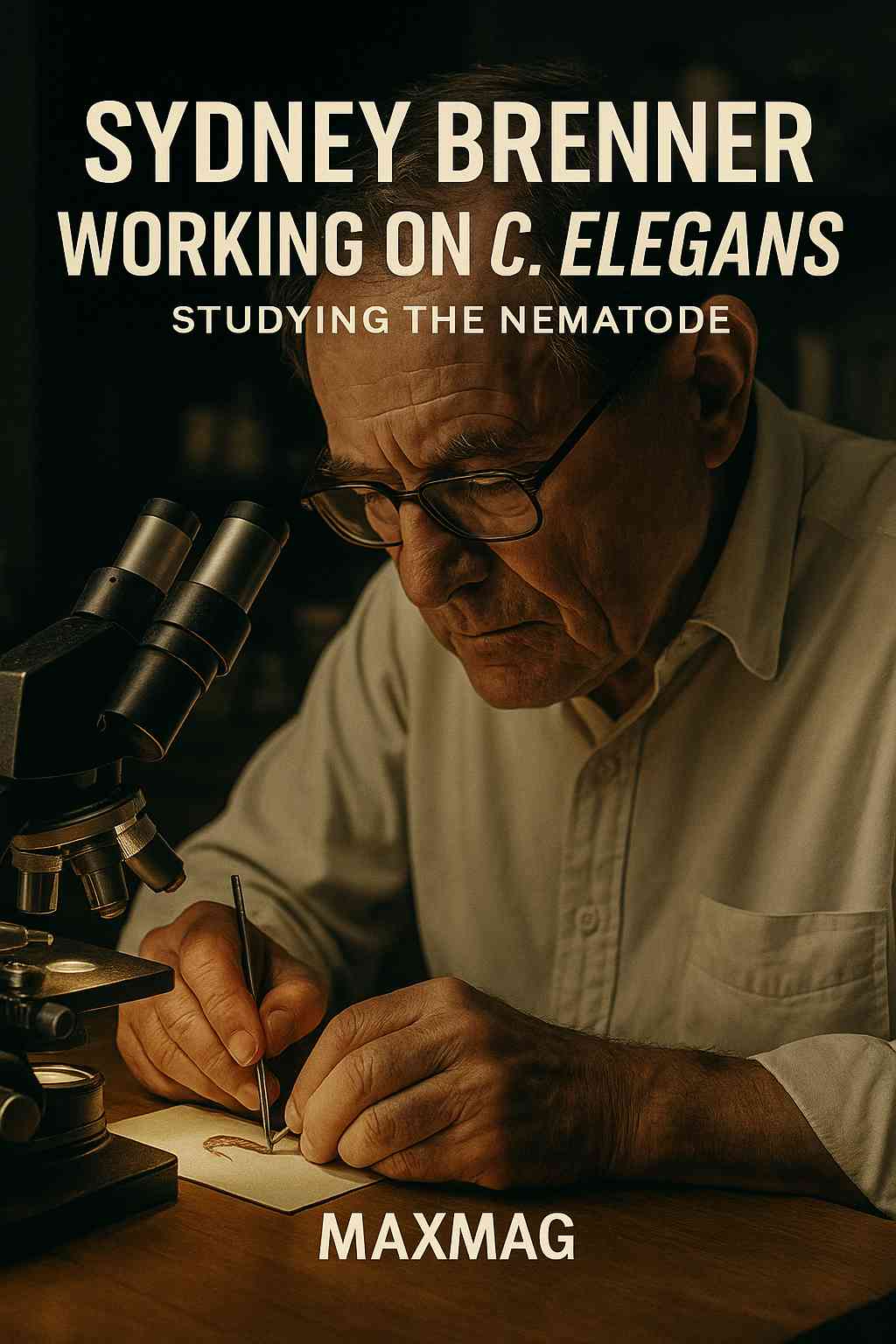
Impact on Molecular Biology and on Wider Society
Rewriting the history of the genetic code
It is hard to overstate how deeply Brenner’s work is woven into the fabric of modern biology. Every time a student learns that three DNA bases make one amino acid, every time a researcher uses messenger RNA as a tool or a biotech company develops a new mRNA-based therapy, they are touching ideas that trace back to the period chronicled in the Sydney Brenner biography. The genetic code is now part of high-school curricula and public conversation, yet it emerged from a handful of tightly focused experiments in which Brenner played a central role.
Beyond textbooks, his influence appears in the logic of experiments. The strategy of using simple model organisms to uncover universal biological principles—now standard in labs worldwide—owes much to his championing of C. elegans. From stem cell biology to ageing research, scientists routinely apply worm-based insights to more complex systems. This is why many historians describe him as a molecular biology pioneer rather than just a specialist in one niche.
From the lab bench to public understanding
Brenner also shaped how science is talked about outside the lab. His columns and interviews combined deep technical knowledge with plain, often playful language. He was unafraid to describe bad ideas as “nonsense” or to puncture hype around the latest fad. At a time when public debate about genetics often swings between utopian promises and dystopian fears, the grounded, sceptical tone visible throughout any honest Sydney Brenner biography feels increasingly valuable.
When he died in 2019, major newspapers around the world marked his passing. The New York Times obituary of Sydney Brenner described him as a central player in the golden age of molecular biology, a phrase that neatly captures both his scientific impact and his presence in wider culture.
Personal Beliefs, Character and Private Life
A life beyond the lab
For all his intensity at work, Brenner’s life was not confined to microscopes and manuscripts. He married May Balkind in the early 1950s, and together they raised a family while moving between South Africa, Britain and, eventually, new scientific homes abroad. Friends recall lively dinner-table conversations in which politics, literature and science were all fair game. The warmth of those scenes sits alongside the more austere, driven image that some Sydney Brenner biography sketches emphasise.
He was open about his atheism and scepticism towards organised religion, but he was equally sceptical of dogma in any form, whether political or scientific. Stories circulate of him challenging speakers at conferences with barbed questions that were nonetheless aimed at clarifying ideas rather than scoring points. This mix of mischief and seriousness, of play and precision, is one of the reasons the Sydney Brenner biography continues to fascinate new generations of readers.
Humour as a scientific tool
Brenner’s humour was not just a personality quirk; it was a method. Jokes in his “Loose Ends” columns often smuggled in sharp critiques of peer review, funding systems or sloppy reasoning. By laughing at the absurdities of scientific life, he made it easier for younger researchers to recognise them and push back. Many colleagues felt that his wit helped preserve a culture of open criticism at institutions that might otherwise have ossified under bureaucracy and prestige.
In a field that can sometimes feel intimidatingly serious, this aspect of the Sydney Brenner biography offers an important reminder: science is a human enterprise, and being able to laugh at one’s own mistakes is as crucial as being able to spot them in the first place.
Later Years and Final Chapter of Sydney Brenner
From Cambridge to California and Singapore
After decades in Cambridge, Brenner’s career became increasingly global. He took roles at the Salk Institute in California, helped build research capacity in Singapore and advised emerging institutions in Japan and elsewhere. These positions were not ceremonial; he remained deeply involved in guiding research agendas, mentoring younger scientists and arguing for long-term investment in basic science.
He also continued to write and speak, distilling lessons from a lifetime in molecular biology into talks that ranged from the evolution of genomes to the future of research funding. His later lectures often zoomed out, connecting the stories told in any Sydney Brenner biography to broader narratives about how human culture evolves, how technology reshapes our understanding of life and how societies choose to support—or neglect—curiosity-driven research.
The final years
Brenner spent his final years largely based in Asia, particularly Singapore, where he saw a new generation of molecular biologists coming of age in a region once far from the traditional centres of science. He died there in 2019 at the age of 92. Tributes poured in from around the world: from Nobel laureates who had once been his students, from early-career researchers inspired by his writing and from institutions that traced their own histories back to his vision.
In these tributes, one theme recurred: Brenner had not only made discoveries; he had changed what kinds of questions biologists felt able to ask. That, more than any single experiment, may be the most enduring lesson of the Sydney Brenner biography.

The Lasting Legacy of the Sydney Brenner biography
A blueprint for asking better questions
Looking back, it is tempting to treat the Sydney Brenner biography as a string of triumphs: the genetic code, messenger RNA, the worm, the Nobel Prize. But his real legacy lies in his approach to problems. He chose systems—viruses, worms, pufferfish—not because they were fashionable, but because they made hard questions answerable. He favoured experiments that could decisively rule out bad ideas. He built institutions where fierce debate was normal and where young scientists were encouraged to challenge their elders.
In an era when biology is awash with data and buzzwords, revisiting the Sydney Brenner biography is a way to recalibrate. It reminds us that good science still depends on simple, well-framed questions, on model systems that reveal general principles and on cultures that value sharp thinking over empty spectacle. His life also shows how a scientist from outside the traditional centres of power—from a cramped shoe shop in South Africa—can end up reshaping global science.
Ultimately, the Sydney Brenner biography helps us understand something larger than one man’s achievements. It illuminates how modern molecular biology came to be, how the genetic code moved from arcane puzzle to everyday knowledge and how curiosity-driven research can ripple out into medicine, technology and culture. At a time when societies are once again debating what kind of science to fund and why, his story is a reminder that the most transformative discoveries often begin with someone asking, in a small, messy office: “What is the simplest experiment that could show us how life really works?”
Frequently Asked Questions about Sydney Brenner biography
Q1: What makes the Sydney Brenner biography so important for understanding modern molecular biology?
Q2: How did Sydney Brenner contribute to cracking the genetic code?
Q3: Why is C. elegans central to any Sydney Brenner biography?
Q4: Did Sydney Brenner work alone on his major discoveries?
Q5: How did Sydney Brenner’s personality influence his science?
Q6: What can young scientists learn from the Sydney Brenner biography today?





